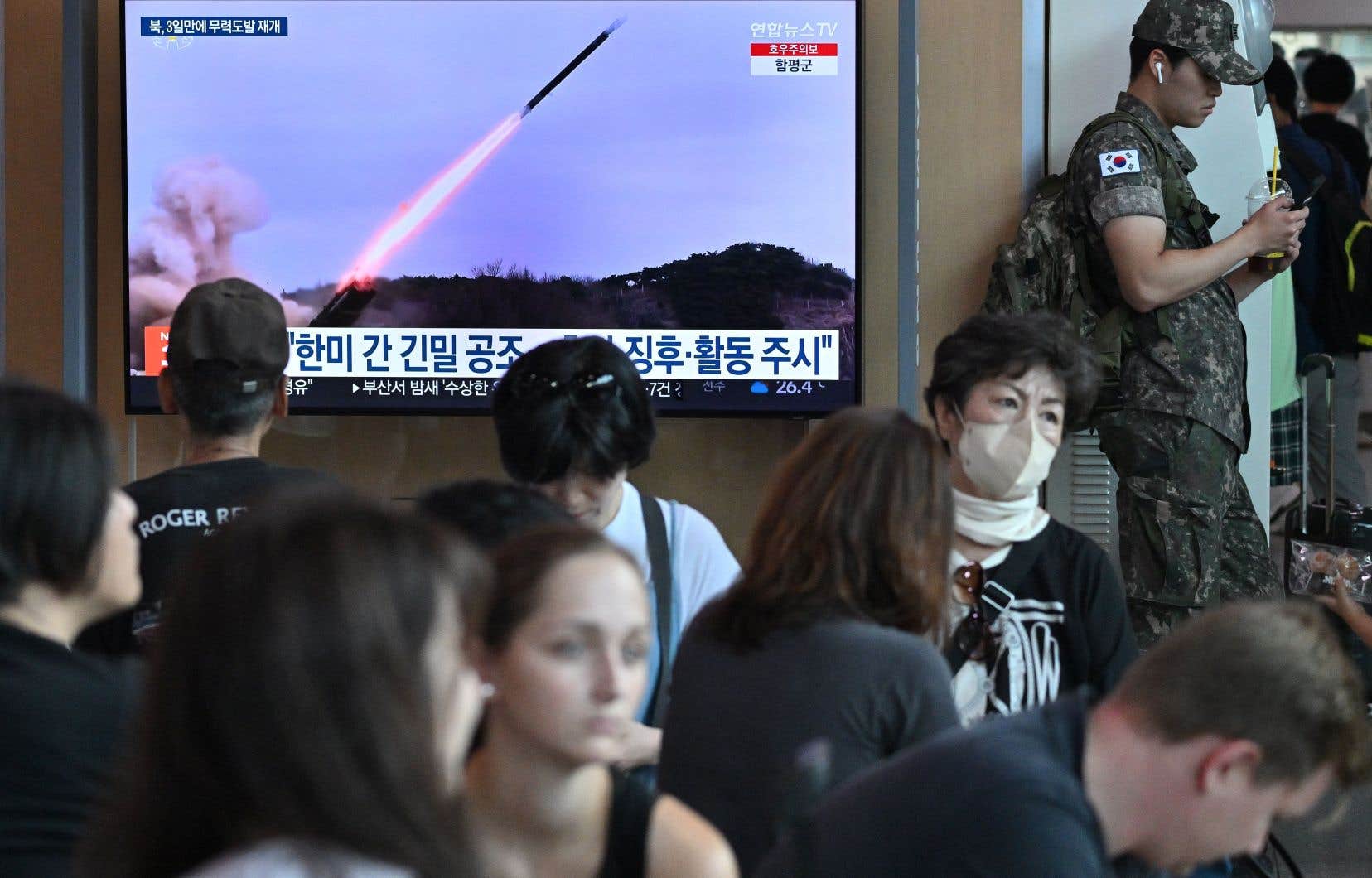North Korea fired two ballistic missiles overnight from Monday to Tuesday, according to Seoul, shortly before celebrations commemorating the end of fighting between the two Koreas, which will be attended by Chinese dignitaries, for the first foreign visit since the pandemic.
The South Korean military says it “detected two ballistic missiles fired by North Korea from areas near Pyongyang towards the East Sea (also known as the Sea of Japan) at 11:55 p.m. on July 24 and midnight on July 25,” according to the Joint Chiefs of Staff quoted by South Korea’s Yonhap news agency.
The two missiles traveled some 400 km before falling into the sea, according to the South Korean Ministry of Defense quoted by Yonhap and the Japanese agency Kyodo.
The White House condemned these new “ballistic missile launches”. The missile tests “pose a threat to the DPRK’s neighbors and the international community,” said White House spokeswoman Karine Jean-Pierre, using the official Democratic People’s Republic of Korea (DPRK) name for Pyongyang.
“Our commitment to the defense of the Republic of Korea and Japan remains unwavering,” she added, this time referring to South Korea.
Earlier, Japan announced a first launch and said the projectile fell at sea outside Japan’s exclusive economic zone (EEZ), according to state broadcaster NHK, citing government officials.
Missile tests in the Yellow Sea
Pyongyang regularly carries out missile tests. On Saturday, “several cruise missiles” were launched in the Yellow Sea, between the Korean peninsula and China.
A US nuclear submarine made a stopover in South Korea last week, with Pyongyang saying the action could “fall under the terms of use” of its own atomic weapons.
Seoul responded to these threats by reaffirming that any such attack would trigger a response leading to the “end” of Kim Jong Un’s regime.
And a second US submarine, the nuclear-powered USS Annapolis, arrived at a South Korean naval base around the time of the new missile launches, according to Yonhap.
In mid-July, North Korean leader Kim Jong Un personally supervised the launch of the country’s newest intercontinental ballistic missile, the solid-fuel Hwasong-18.
70 years after the end of hostilities
The firing of these last two ballistic missiles, before dawn on Tuesday, comes shortly before celebrations in North Korea of the 70th anniversary of the end of the fighting in the Korean War (1950-1953).
A Chinese delegation led by Li Hongzhong, member of the Politburo, must on this occasion go to North Korea, according to the official North Korean agency KCNA, for what will be the first known visit of a foreign delegation since the closing, at the beginning of 2020, of the borders of North Korea with the Covid-19 pandemic.
Relations between the two Koreas are currently at an all-time low, diplomacy stalled, with Kim Jong Un calling for an acceleration of the arms race, including tactical nuclear weapons.
In response, Seoul and Washington conducted joint military exercises, incurring the ire of Pyongyang.
Separately, US soldier Travis King is believed to be currently being held in North Korea after entering it illegally on July 18.
“Discussions” regarding him have started between the United Nations and Pyongyang “via the armistice mechanism”, according to the deputy head of the UN command, General Andrew Harrison, in reference to the agreement which ended hostilities in the 1953 Korean War.
Since the 1950-1953 war, concluded by an armistice in the absence of a peace treaty, the two Koreas are still officially at war.
